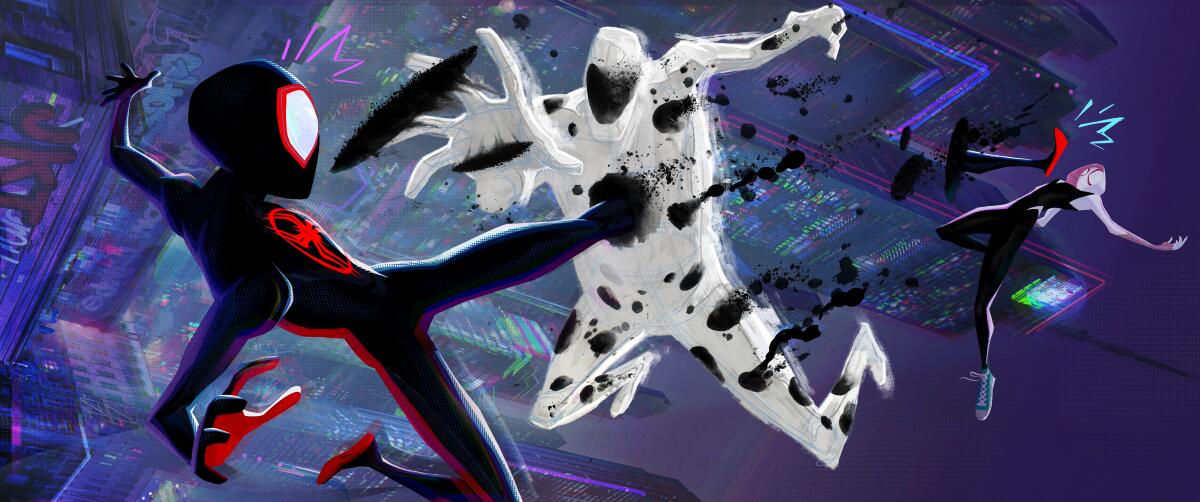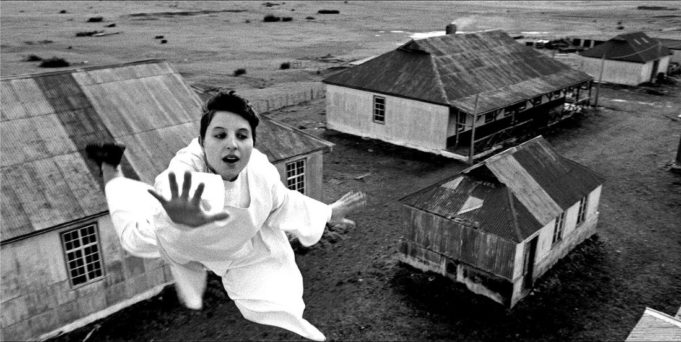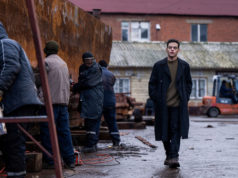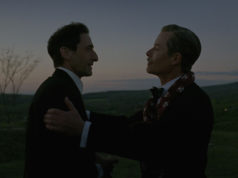To answer your question, I do think it’s weird that Barbie missed out on the Best Director and Best Actress categories. However, since the Oscar ceremony falls the same week as our International Women’s Day issue, I’m back to handicapping only the mid-major categories of the awards show, so let’s get to it. As always, any wrong predictions, and I’ll refund you the amount of money that you spent to read this article.
Cinematography: I could not be happier that Edward Lachman is nominated for the best-photographed movie of the year, El Conde, especially since I’m still bitter about him losing the Oscar for Far From Heaven 21 years ago. Weirdly enough, all the nominated films in this category utilize both color and black-and-white footage, with Killers of the Flower Moon re-enacting the newsreels of the time period and Maestro using that to signify the passage of time, while El Conde switches to color right at the end to exhilarating effect. I hope Lachman wins because he’s had such a distinguished career (Desperately Seeking Susan, The Virgin Suicides, Erin Brockovich, Carol), but it does seem like Hoyte van Hoytema (who should have been nominated for Nope) will win this one for his IMAX work on Oppenheimer. Lachman won a nod for an overlooked film, but Lílis Soares deserved some consideration for the stunning Mami Wata. So did Maria von Hausswolf for the Icelandic religious epic Godland and Matthew Chuang for the gay coming-of-age film Of an Age. Every year there’s a bad movie that features great cinematography, and my pick this year is Jörg Widmer’s work on the dance movie Carmen.

Production design: Reading the tea leaves from the guild awards, it’s starting to look like Shona Heath and James Price for Poor Things have pulled ahead of Sarah Greenwood for Barbie. The estimable director Ari Aster commented that the sets for Poor Things looked like the inside of a Cheesecake Factory, and he’s right. Beyond those two contenders, I’m not overly impressed with the nominees in this category. Arthur Max’s nod for Napoleon feels like one of those pro forma nominations for the movie with expensive period interiors. I would have been better pleased if the voters had honored James Clyne’s futuristic look for The Creator or Suzie Davies’ English country estate setting for Saltburn. Thorsten Sabel’s hermetic apartment for Inside and Zosia Mackenzie’s Greek vacation spot for Infinity Pool were not eligible for this award. Neither was Nate Jones’ look for Bottoms, which has more jokes hiding in the background than any movie of 2023. (Check out the Creation of Adam mural with the quarterback of the football team handing off a football to God.)

Costume design: Holly Waddington’s foofy Victorian dresses for Poor Things matches the film’s surreally funny tone, and it might be the front runner here. Still, don’t count out Jacqueline Durran’s costumes for Barbie, which take their cue from decades of outfits for the doll. (Fun fact: Mattel was at one point the world’s most prolific fashion designer because of the constant need to produce new costumes for Barbie.) Jacqueline West’s costumes for Killers of the Flower Moon were not only painstakingly historically researched but also beautiful. Still, this is another category that looks like it’ll come down to either Barbie or Poor Things. Lindy Hemming’s outfits for Wonka would have been a more interesting nominee than either Napoleon or Oppenheimer, and Bunmi Demilola Fashina’s traditional African outfits for Mami Wata were not submitted for consideration.

Foreign-language international feature: The rules for this category state that an eligible film must be made in a country other than the United States and have a majority of its dialogue be in a language other than English. That’s how English-speaking countries like Canada, Australia, Ireland, Ghana, Nigeria, and others have submitted films here. None of them have won, but The Zone of Interest (United Kingdom) looks primed to do so and is a dark horse to upset Oppenheimer in the Best Picture race. As I’ve mentioned before, Anatomy of a Fall also has a Best Picture nomination, but France submitted The Taste of Things in this category instead. Among the other nominees, Perfect Days (Japan) and The Teachers’ Lounge (Germany) have devoted fans, Society of the Snow (Spain) has a Netflix following, and Io Capitano (Italy) may strike a chord with its take on the immigration debate from a country that’s no stranger to high emotions on the subject. Still, none of them look primed to take down Jonathan Glazer’s Nazi drama. Looking over the list of films that various countries submitted, About Dry Grasses (Turkey) deserved to make the shortlist at least, as did the eye-popping animated film The Peasants (Poland), and the blazing, aforementioned Mami Wata (Nigeria). The Missing (Philippines) was the best animated movie of the year. Making the shortlist were the blood-pumping 20 Days in Mariupol (Ukraine) and Four Daughters (Tunisia), either of which may yet win the documentary feature category, and the deeply moving Tótem (Mexico) and the spectacular Godland (Iceland). Fallen Leaves (Finland) also has lots of people in its corner, though I must admit I prefer other movies by the great Aki Kaurismäki to his latest one. I have not yet had a chance to see Do Not Expect Too Much From the End of the World (Romania), which will be released in America this year, but my previous experiences with director Radu Jude raise my hopes.

Documentary: My annual feature on the year’s best documentaries has already run, so you can check it to see what I think are the best nonfiction films. American Symphony and Still: A Michael J. Fox Movie, feel-good entries that were widely tipped for nominations, wound up missing out. Instead, there’s an international slate here full of hot-button issues. Nisha Pahuja’s To Kill a Tiger chronicles a farmer in rural Jharkhand who wages a lonely crusade to bring his 13-year-old daughter’s rapist to justice despite everyone in his village being against him, while Moses Bwayo’s Bobi Wine: The People’s President has the benefit of an electrifying subject in the pop singer who ran for president of Uganda and challenged his country’s power structure. These are intriguing contenders, but I do think the controversy over Congressional Republicans dragging their feet over funding Ukraine will propel 20 Days in Mariupol to victory, not least because Mstyslav Chernov displays real cinematic chops editing the footage that he risked his life to get. Since you’re wondering, neither Taylor Swift’s nor Beyoncé’s concert films were submitted for consideration for this award.

Animated feature: I’m glad to see the dialogue-free Spanish film Robot Dreams get a nod here, and gladder that Netflix’s Nimona also earns a nomination. Spider-Man: Across the Spider-Verse will probably win this one, and that’s as it should be. Still, I think either The First Slam Dunk or They Shot the Piano Player would have been a better nominee than that sodden Pixar entry Elemental. The aforementioned The Missing, for some reason, wasn’t submitted in this category.
Score: Joscelin Dent-Pooley a.k.a. Jerskin Fendrix deservedly earns an Oscar nomination for his very first film score for Poor Things, but this category is blighted by a pair of terrible omissions. Mica Levi’s turbulent music for The Zone of Interest somehow gets overlooked, and Joe Hisaishi remains unrecognized despite his music for The Boy and the Heron capping a career full of great scores for anime and live-action Japanese films. The late Robbie Robertson receives a posthumous nomination for his music for Killers of the Flower Moon and John Williams breaks his own record for oldest nominee for the Indiana Jones movie, but it doesn’t look like anything will stop Ludwig Göransson from collecting his second trophy for Oppenheimer. Deprived of a posthumous nomination is Ryuichi Sakamoto for the Japanese teen film Monster, and Michael Abels and Kris Bowers did an underrated job of imitating 18th-century music for Chevalier.
Song: Billie Eilish’s “What Was I Made For?” from Barbie won the Grammys’ equivalent of this award, so that should tell you where this is heading. It’s a pity that the pink juggernaut will crowd out the Osage-language “Wahzhazhe (A Song for My People)” from Killers of the Flower Moon. This category would be more competitive and more fun if the voters had included Megan Thee Stallion (“Out Alpha the Alpha” from Dicks: The Musical), Olivia Rodrigo (“Can’t Catch Me Now” from The Hunger Games: The Ballad of Songbirds & Snakes), or even Jack Black (“Peaches” from The Super Mario Bros. Movie). I mentioned in my review of M3GAN that “Tell Me Your Dreams” made me cry, and I think that was the best song from 2023’s movies. It wasn’t nominated. What I wouldn’t have given to see a homicidal doll perform at the Oscars ceremony.












